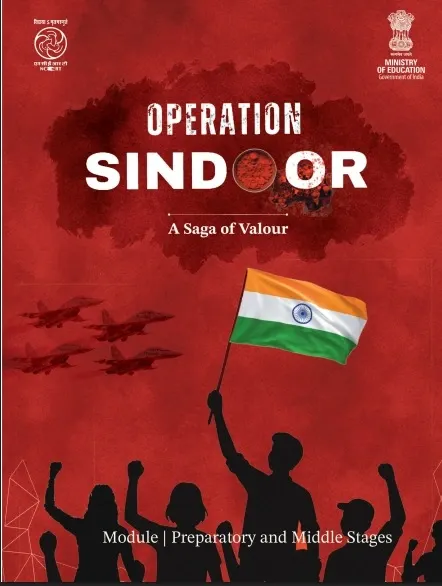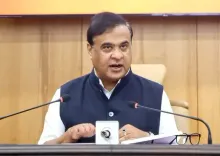How is Operation Sindoor Enhancing National Awareness in Classrooms?

Synopsis
Key Takeaways
- Operation Sindoor is a significant military response to terrorism.
- NCERT has developed educational modules for Classes 3 to 12.
- The aim is to instill national pride and awareness in students.
- Collaboration among the Indian Armed Forces is highlighted.
- The operation sends a message of deterrence against terrorism.
New Delhi, Aug 19 (NationPress) In a significant initiative aimed at fostering a sense of national pride and awareness regarding India’s counter-terrorism efforts among students, the National Council of Educational Research and Training (NCERT) has unveiled two specially crafted modules focusing on Operation Sindoor for schoolchildren in Classes 3 to 12.
The operation transcends a mere military strike; it is presented as a national dedication to peace, justice, and in remembrance of those who perished in the April 2025 Pahalgam terror attack.
Released as supplementary educational resources, these modules arrived over three months following ‘Operation Sindoor’, India’s precise and strategic military response to the Pahalgam attack that resulted in the loss of 26 lives.
The objective is not solely to inform students about a pivotal national security incident but also to cultivate their understanding of India's escalating global presence and commitment to self-defence.
The modules assert that the Pahalgam attack was carried out under the “direct orders” of “Pakistan's military and political leadership,” despite their public denials. This attack, targeting civilians including tourists, was designed to instill fear and provoke communal unrest. In retaliation, Operation Sindoor was initiated on May 7, 2025, as a calculated but resolute response.
“India launched missiles and air strikes, hitting nine terrorist locations within Pakistan and Pakistan-occupied Jammu and Kashmir (PoJK) on May 7, 2025. Of the nine selected targets, seven terror camps were obliterated by the Indian Army, while the Indian Air Force took out terrorist installations in Muridke and Bahawalpur, which serve as the operational hubs for Lashkar-e-Taiba and Jaish-e-Mohammed,” one of the modules elaborates.
Significantly, the NCERT underscores India's dedication to reducing collateral damage. “Every target was thoroughly vetted. Only terrorist strongholds were engaged. This operation demonstrated that India would not allow terror orchestrators to evade justice,” the module elaborates. It further emphasizes that no civilian casualties occurred—a critical point highlighted as part of India’s ethical and strategic advantage.
The modules are categorized into two educational tiers:
‘Operation Sindoor - A Saga of Valour’ is tailored for younger and middle-stage students (Classes 3 to 8).
‘Operation Sindoor - A Mission of Honour and Bravery’ is designed for senior students (Classes 9 to 12).
Both modules emphasize the coordinated reaction of the Indian Armed Forces, spotlighting the collaboration between the Army, Air Force, and strategic command leadership. The operation is portrayed as a pivotal moment in India’s counter-terrorism strategy, sending a distinct message of deterrence.
Quoting Prime Minister Narendra Modi, the module states:
“Operation Sindoor is not a conventional military operation. It embodies India’s policy, intent, and decisive ability.”
The material also commends the response of local civilians in Kashmir, noting how residents openly denounced the terror attack—a development that, according to the module, “challenges stereotypes and reveals the authentic voice of peace-loving individuals.”
Through this initiative, NCERT aspires to raise awareness among students about India’s defence readiness, the application of advanced technology, and its principled stance in global geopolitics—while also honoring the memories of those lost to terrorism.






